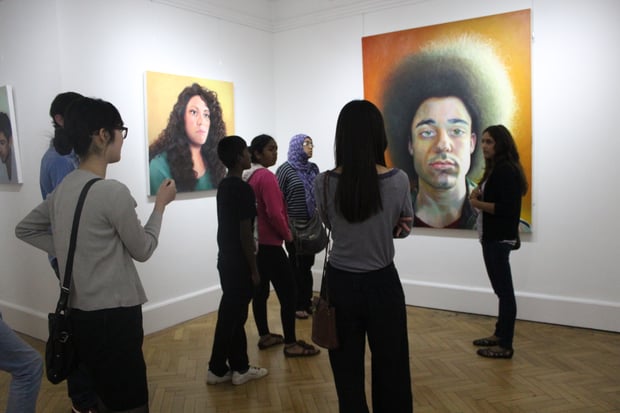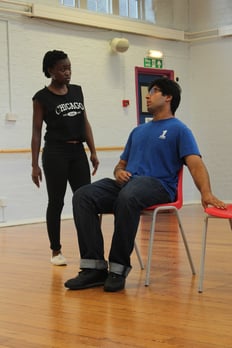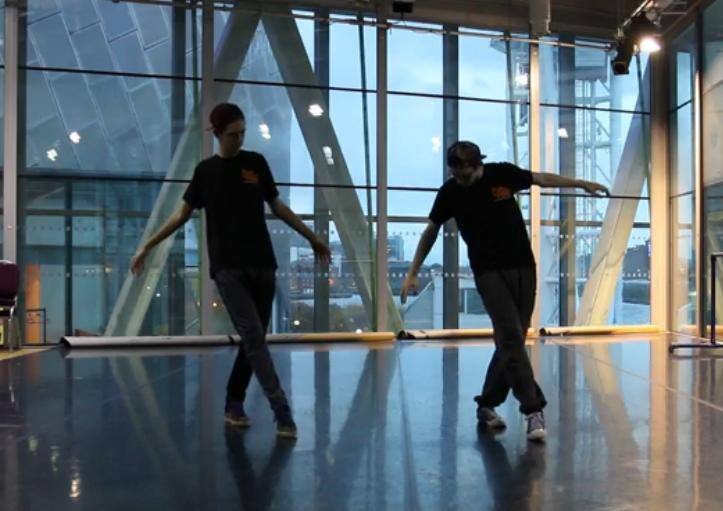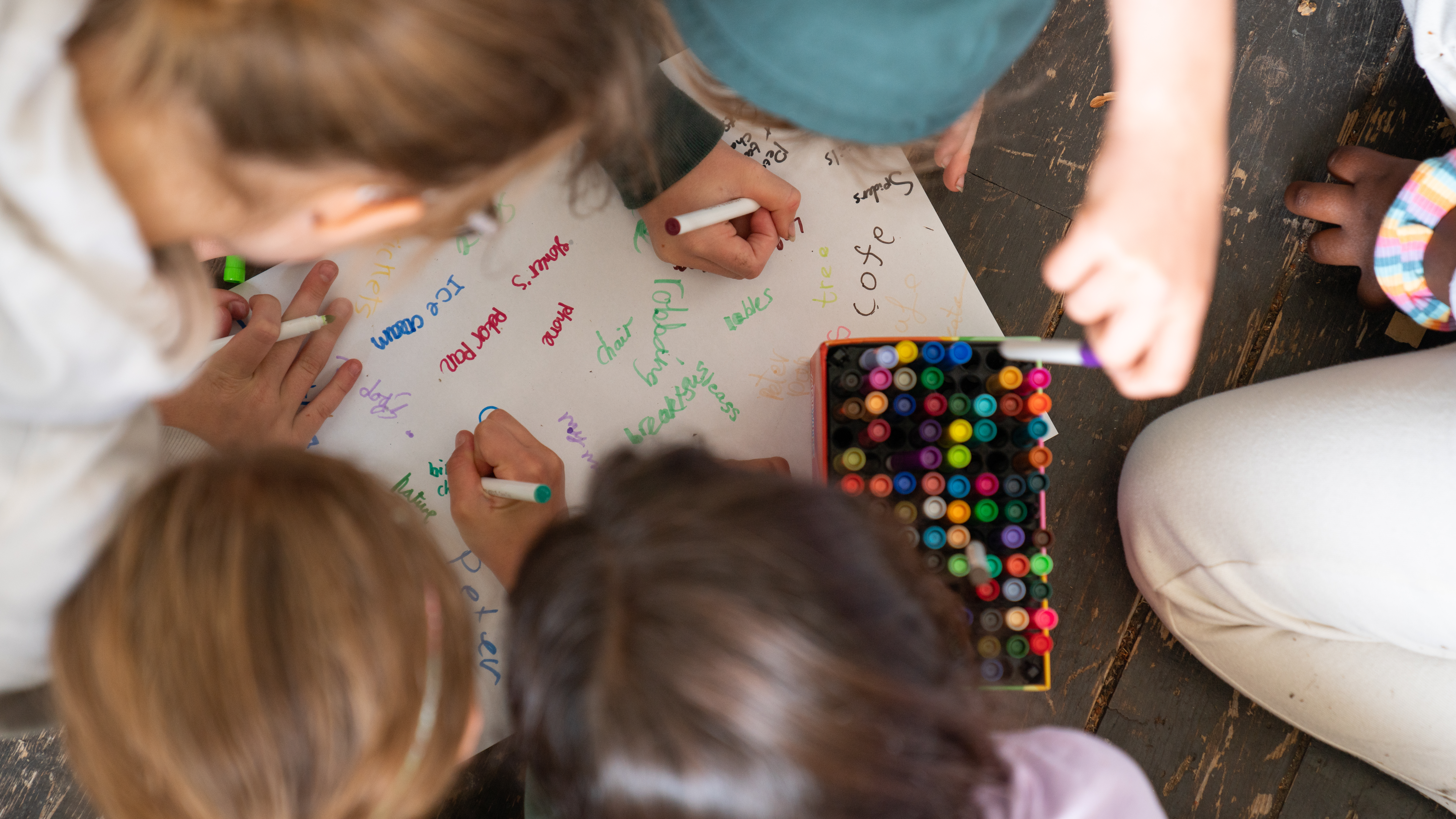
Delivering Gold Arts Award with emerging artists
BY: Guest Writer
08 Jan 2014
In this blog we hear from Cate Gordon, Participation Programmer at Harrow Arts Centre, about how they structure their Young Associate artist development programme using Gold Arts Award as a framework.
Developing the programme
Harrow Arts Centre has run the Young Associate artist development project for the past two years, supported by John Lyon’s Charity, with one Associate in 2012-13 and two in 2013-14. We advertise the role publicly and invite applications from artists aged 18-25 working in any of the art forms represented in our programme. The role lasts for one year and includes a mixture of support to achieve Gold Arts Award, paid facilitation work and a feature in our events or exhibitions programme and support for the artist’s personal projects outside the remit of the award.
We have limited resources and staff and Gold is a long term commitment, but we feel it is a really important part of our programme and by structuring the programme carefully we have achieved some amazing work with fantastic young artists and offered a really strong progression route. This resource describes practical steps we took when designing our programme, to make sure it is both a high quality experience for the young artists and can realistically be delivered within our resources.
Participants
This is the only project through which we offer Gold Award, and we only work with a very limited number of participants, for the following reasons:
- The Associate project started because there is a lack of higher-level development opportunities for young artists in our geographic area, and because we wanted to be proactive about working with local artists as part of our programme. Therefore we use Gold Award as a high-level opportunity for emerging artists who are aiming to make a living from the arts.
- We have one permanent participation staff member who delivers the project. While it is possible to deliver Gold with groups, opening up the award to larger numbers of participants would have necessarily meant the participants having less one to one contact; we would not be able to achieve the same depth of experience with larger groups.
- As part of the programme the participants’ work is included in our programme; we are limited in the number of events and exhibitions we could include and so having more participants would have meant less individual opportunities of this kind.
Therefore we have found this structure makes the best use of the resources we have and offers the most valuable experience possible to the participants and to our organisation. However, in the second year of the project we did increase to two Associates; this was of benefit because there was the opportunity to work together where relevant. Our model is very intense and requires a lot of commitment from the participants.
We restricted the age range to 18+ because of the paid roles involved the level of independence and the time input we felt was required. This has worked very well; those who have participated so far have truly been ‘emerging artists’ with a level of experience and understanding of their own practice behind them and a commitment to working in the arts. They have used the project as an opportunity to extend and develop their practice, trying new ways of working with our support.
Our Silver project is run on a very similar model, with larger numbers of participants, the majority of whom are in Year 12 or 13 and so we believe this age limit will work well for us going forward as, by the time participants have completed their Silver, they are or are nearly 18. In practice, however, we recommend participants have a break and explore their practice further before coming back to Gold because we have found participants have gained more from the programme this way, rather than progressing immediately between levels.
Programme content
When advertising the role we are relatively vague, because we want to support the artists to develop their own practice from their current position rather than set particular targets ourselves. Gold Award offers a brilliant structure for this, which is genuinely challenging, but flexible enough to work for a wide variety of people and art forms. In practice, each Associate has undertaken completely different projects within this same structure. The following are examples of the projects our Associates undertook in 2013-14:
- produced a new play exploring the father-son relationship, working with young male actors
- produced an exhibition of new work exploring ‘distortion’
- curated an exhibition of local artists’ work
- led a discussion with young people on the purpose and value of ‘shock’ in art
- led a discussion with young people on why young people don’t go to the theatre
- took part in weekly facilitation training with a theatre company
- learnt first aid and safeguarding skills
- interviewed and shadowed practitioners at HAC and elsewhere
- reviewed a huge number of different events, across the art forms programmed at HAC and elsewhere
- trained as Arts Award advisers

Unit 2: leadership of an arts project
Our Associates lead a wide variety of projects throughout their time with us, and so rather than evidencing this unit through one project, we took a ‘portfolio’ approach, with each Associate framing their evidence using the following title: 'To develop as an arts facilitator through the delivery of a range of workshops and activities.'
Examples of the projects they led include:
- delivered an intensive weekend drawing school for young people
- delivered a week long dance project with young people
- delivered five one off workshops exploring light and colour with groups of varying ages from five to adult
- facilitated a music workshop and performance with young people who have learning disabilities
- curated an exhibition
- supported and progressed to leading the HAC Youth Theatre
Each Associate used one main project to evidence this unit, supplemented by other smaller projects. This was a more realistic reflection of the different ways in which the Associates work with us across the year. A simple example is risk assessments. The Associates took part in some projects where they were shadowing or working with another artist, or working on an existing project which already had a risk assessment, as well as new projects they had set up themselves that needed to be assessed from scratch. The ‘portfolio’ approach allowed us to use evidence from across this range of experience.
As an adviser it is also really important to remain aware of the young person’s evidence collection. We incorporated this into our planning meeting right at the start of the year and explained in depth the kinds of evidence required for each element. This way the Associate understood the award structure and knew to start collecting evidence right from the beginning. Signposting, labelling and cross-referencing is really important to make it clear for the moderator where the evidence is in a project like this, where there is an enormous amount of evidence!
 Progression
Progression
The age and experience of our participants and the requirements of Gold Award encourage working with a number of organisations. Our Associates have definitely benefited from this broad approach and have made many contacts as a result. This can be noted in what they are doing now, for example:
- working full time in the young people’s department of the National Portrait Gallery
- working freelance in young people’s theatre
- undertaking a PGCE from September 2015
Timing
We run the programme across a full academic year. We chose to run with the academic rather than calendar year to allow for A level students and graduates completing their courses in the summer to have time to consider the programme and apply in time for September. We have an application deadline a week after A level results come in, although in practice we found most applications came in well in advance.
The Associate’s year starts with a planning meeting, during which we plan out a rough outline of the year and an initial timescale. It can be daunting to look at it as a whole year, so we try to break down the units into chunks that can be achieved bit by bit. We start with Unit 1, Part D (form and communicate a view on an arts issue) and aim to have this completed by the end of December, because it is a relatively self contained unit and gives the Associate a taste of planning and organising an event (the public discussion) within our organisation before they move on to larger or more complex events.
Working with a small number of participants allowed me to be more flexible as the adviser, making appointments with each Associate as needed. We start off with catch up meetings scheduled in every two to four weeks but beyond this all our other meetings are booked in as and when required. This kind of flexibility works well for me as the adviser, but it would be worth considering if setting meetings in advance would be more practical for some settings.
Funding
The first two years of our Associate project were funded by John Lyon’s Charity. However, a great deal of opportunities are available at HAC, with little or no extra costs to involve the Associates in them. We could achieve the elements of Gold Award internally without extra funding, so don’t let the idea put you off! However, having external funding enabled us to offer additional support to the Associates, particularly to access training opportunities elsewhere and notably to train as Arts Award advisers themselves and this has been invaluable both to us as an organisation and to the Associates, all of whom now work in the arts.
Related posts
BY: Guest Writer




Comments & Replies